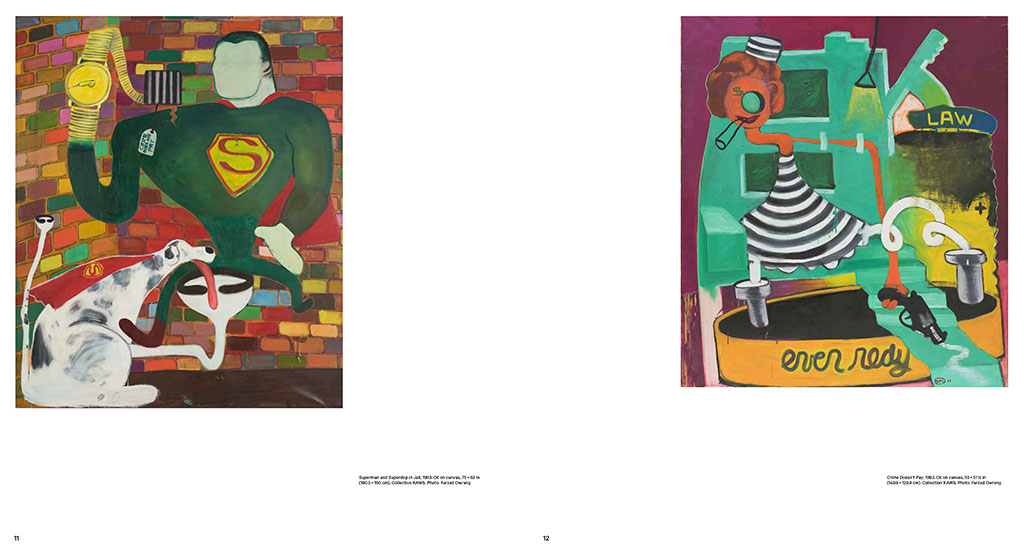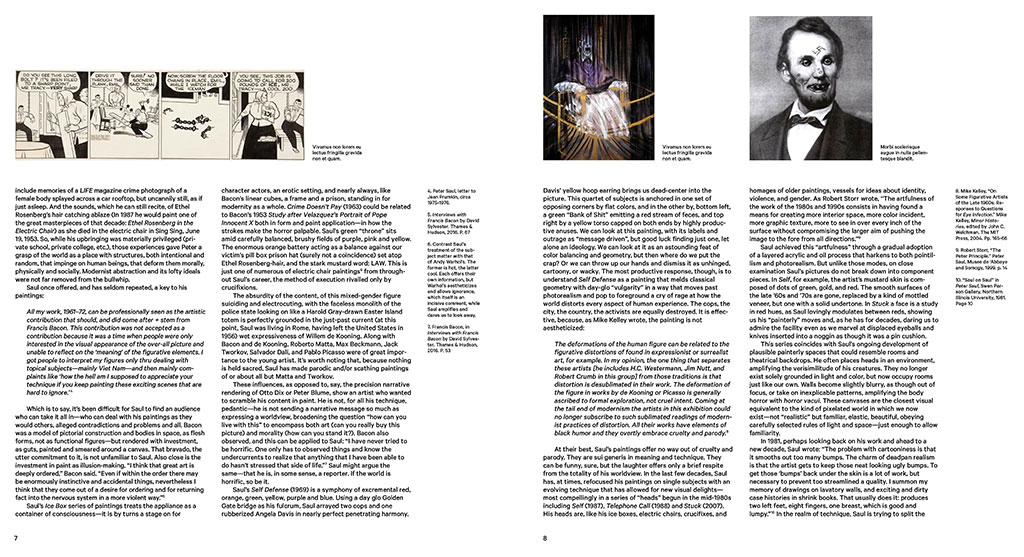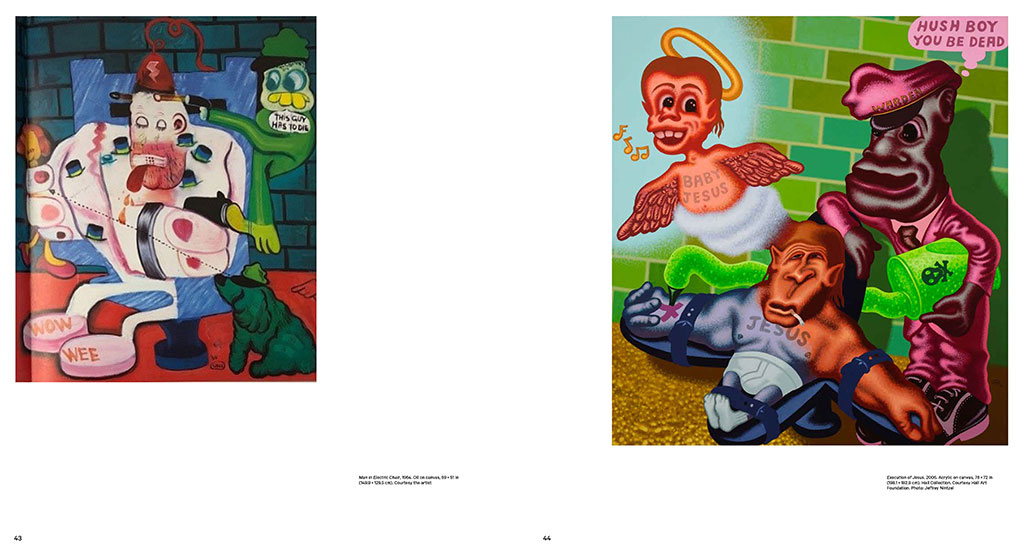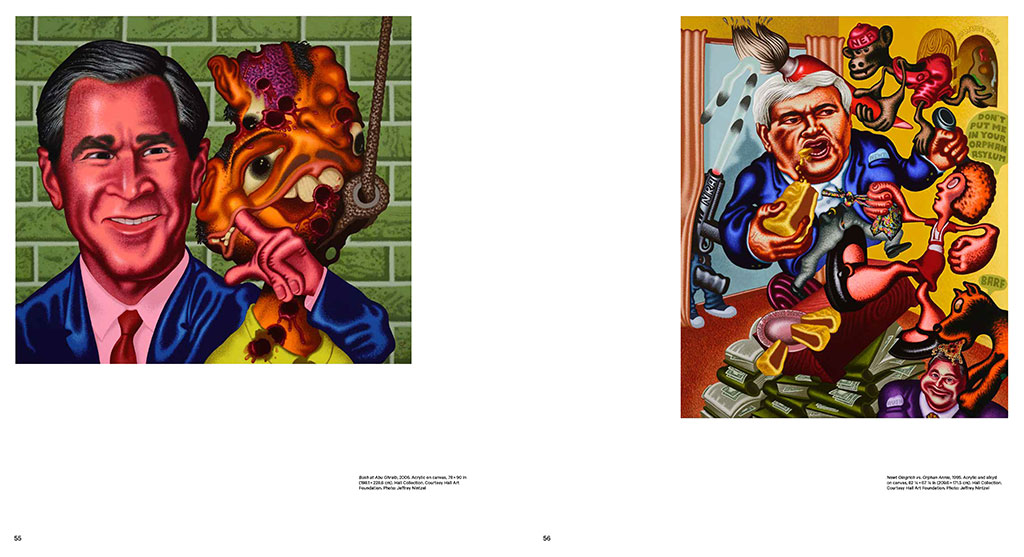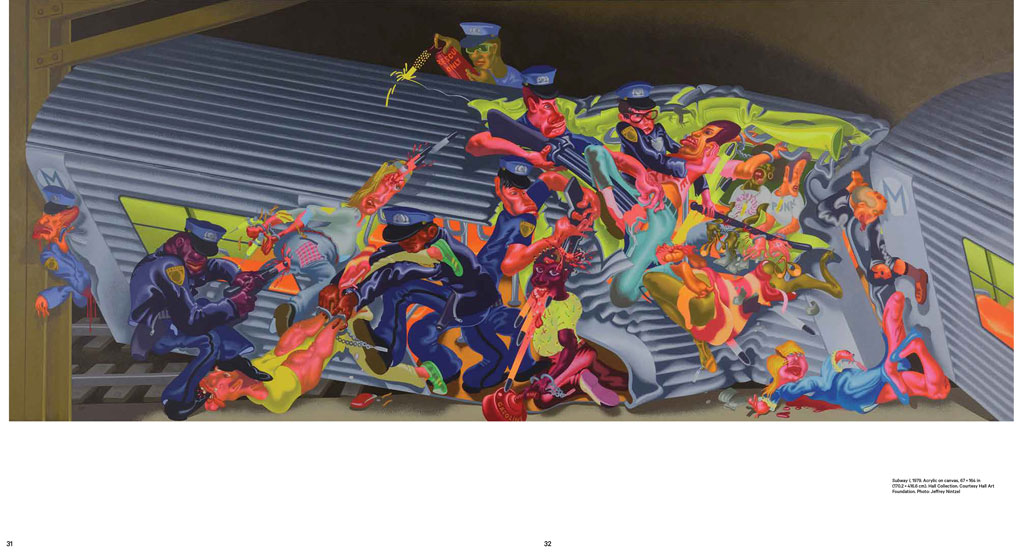BOOK:Peter Saul-Crime and Punishment
 Beginning in the early 1960s, Peter Saul began to incorporate imagery borrowed from a range of pop-cultural sources into his exuberant, brightly colored paintings, adopting a style that has proven to be far ahead of its time. His work developed independently from concurrent art historical movements like Pop art, with which it shares some superficially similar concerns. Instead of the cool detachment of Andy Warhol and Roy Lichtenstein, however, Saul crafted his own unique blend of Surrealism, history painting, vernacular illustration, and the real-life shock and horror of current events. This madcap formula has allowed the artist to critique art historical pretensions while addressing the outsized characters and realities of his day. Long considered outside the narrative of 20th Century art, Peter Saul’s work has gained greater appreciation as younger artists register his influence in work across mediums. Marking the artist’s first New York museum survey, which brings together approximately 60 paintings from across his long career, the Monograph “Crime and Punishment” copublished by New Museum and Phaidon Press, features new contributions from Robert Cozzolino, Matthew Israel, Dan Nadel, Nicole Rudick, and John C. Welchman, and interviews with Peter Saul and Thomas Crow.-Efi Michalarou
Beginning in the early 1960s, Peter Saul began to incorporate imagery borrowed from a range of pop-cultural sources into his exuberant, brightly colored paintings, adopting a style that has proven to be far ahead of its time. His work developed independently from concurrent art historical movements like Pop art, with which it shares some superficially similar concerns. Instead of the cool detachment of Andy Warhol and Roy Lichtenstein, however, Saul crafted his own unique blend of Surrealism, history painting, vernacular illustration, and the real-life shock and horror of current events. This madcap formula has allowed the artist to critique art historical pretensions while addressing the outsized characters and realities of his day. Long considered outside the narrative of 20th Century art, Peter Saul’s work has gained greater appreciation as younger artists register his influence in work across mediums. Marking the artist’s first New York museum survey, which brings together approximately 60 paintings from across his long career, the Monograph “Crime and Punishment” copublished by New Museum and Phaidon Press, features new contributions from Robert Cozzolino, Matthew Israel, Dan Nadel, Nicole Rudick, and John C. Welchman, and interviews with Peter Saul and Thomas Crow.-Efi Michalarou


